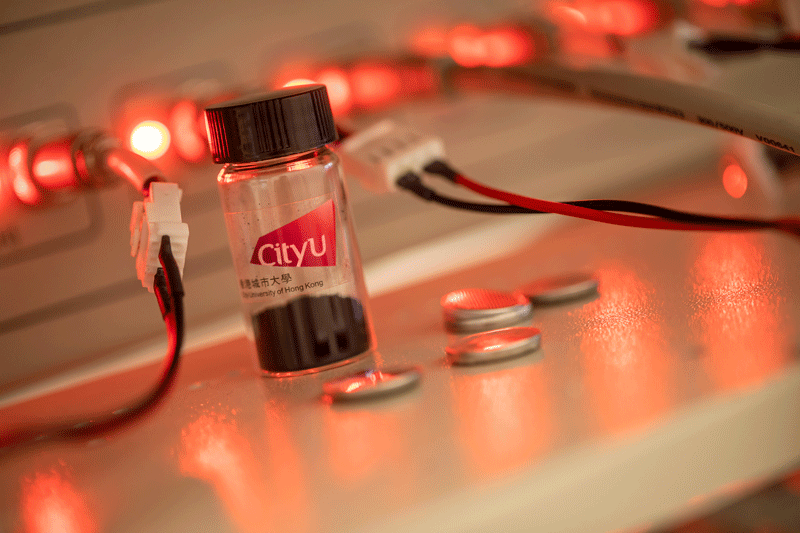MXene electrode boosts energy storage
MXene electrodes with stable voltage output and high energy density could pave the way for new and powerful energy storage batteries, say scientists at City University of Hong Kong (CityU).

Until now, the 2D nanomaterial’s application has been hindered by its unstable voltage output. According to the researchers, reported MXene electrodes discharge with a rapidly descending output voltage, which leads to limited energy density, usually less than 100Wh/kg-1.
‘The electrochemical performance of MXenes is significantly affected by their interactions with ions and the intrinsic ion properties, including the electronegativity, surface energy, ionisation energy, ions radius and the valence states,’ explains Professor Zhi Chunyi from CityU’s Department of Materials Science and Engineering (MSE).
‘The intercalated ions reduce incremental charge or neutralise and cause rapid electron delocalisation of MXenes through weak electrostatic adsorption, hydrogen bonds, or strong iconic bonds.’
According to the study, published in the journal Joule, the MSE researchers have developed battery-type niobium carbide Nb2CTx MXene electrodes that can demonstrate completely different electrochemical properties.
Chunyi explains, ‘Nb2CTx MXene is synthesised based on a typical wet chemical etching process [and] preparation of the Nb2CTx MXene electrode, full cell – paired with a zinc metal anode – and subsequent electrochemical performance tests follow the standard procedures.’
Using a water-in-salt electrolyte that is stable when high voltage is applied, the researchers have scanned the MXene electrode over a wide voltage window – from 2.0V to 2.4V – to study its electrochemical properties. At the higher voltage, the MXene electrode displays features that are different than 2.0V and to other previously reported MXene systems.
‘We found that the Nb2CTx MXene electrode exhibits a typical pseudo/capacitive behaviour at low voltage scanning with fast voltage decay upon discharge,’ continues Chunyi. ‘However, it presents a battery-like behaviour at high voltage scanning with stable voltage output and high energy density.’
Significantly, the researchers demonstrate that they can equip the 2D nanomaterial with a flat and stable discharge plateau of 1.55V to boost its energy density. They say they have successfully achieved a record-level energy density among all aqueous Mxene electrodes with a reading of 146.7Wh/kg-1 with a 63% contribution from the plateau region.
‘In this research, the developed high-voltage scanning approach greatly enhances the shuttle kinetics and changes the shuttle pathway of charge carriers,’ he says.
‘It then activates its battery-like electrochemical characteristics with distinct discharging plateau and high energy density.’
The researchers note that further work is needed to fully realise the practical applications. One of the hurdles is reducing, or even eliminating, MXenes’ sensitivity to water and oxygen.
However, if low-cost preparation can be achieved, they add that MXene-based energy storage devices offer great potential for use in large-scale batteries.
Their tests also demonstrate the biocompatible and bacteriostatic characteristics of MXenes, so another potential use could be in applications with stringent safety requirements, such as implanted power supplies and wearable batteries.
The next step is to explore the potential for multifunctional MXene-based energy storage devices, such as in electromagnetic shielding batteries and degradable batteries.

